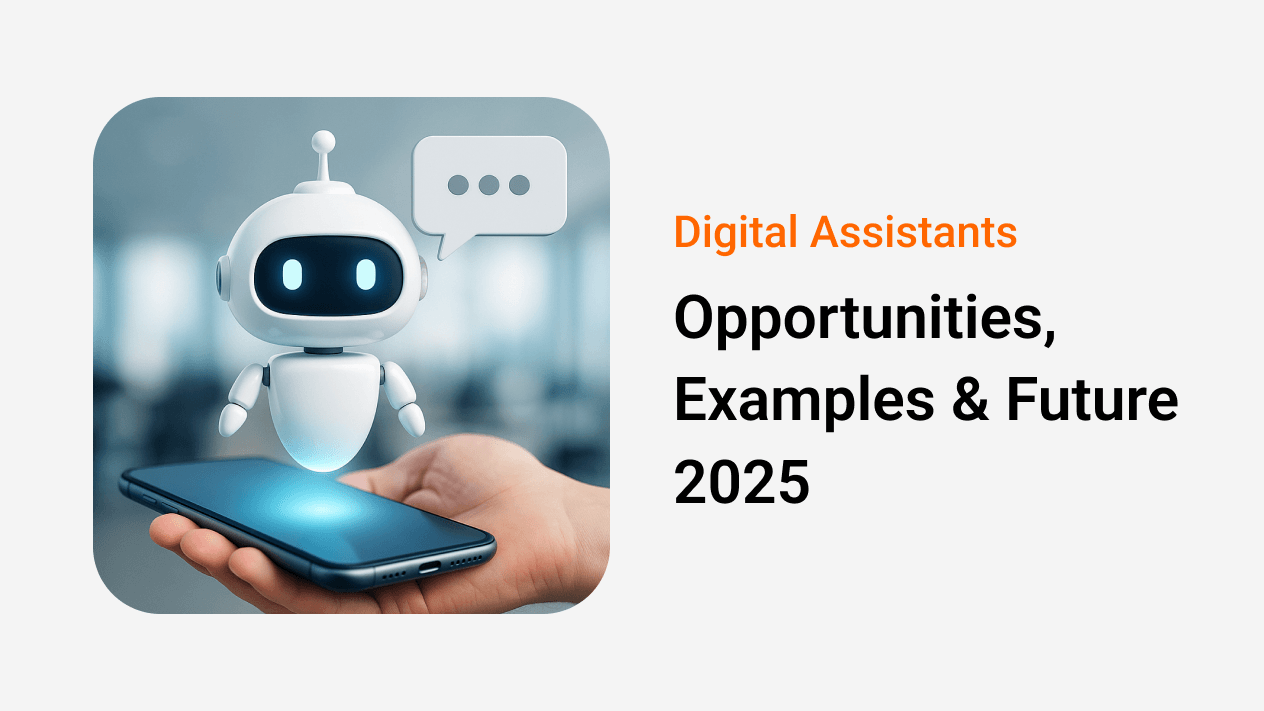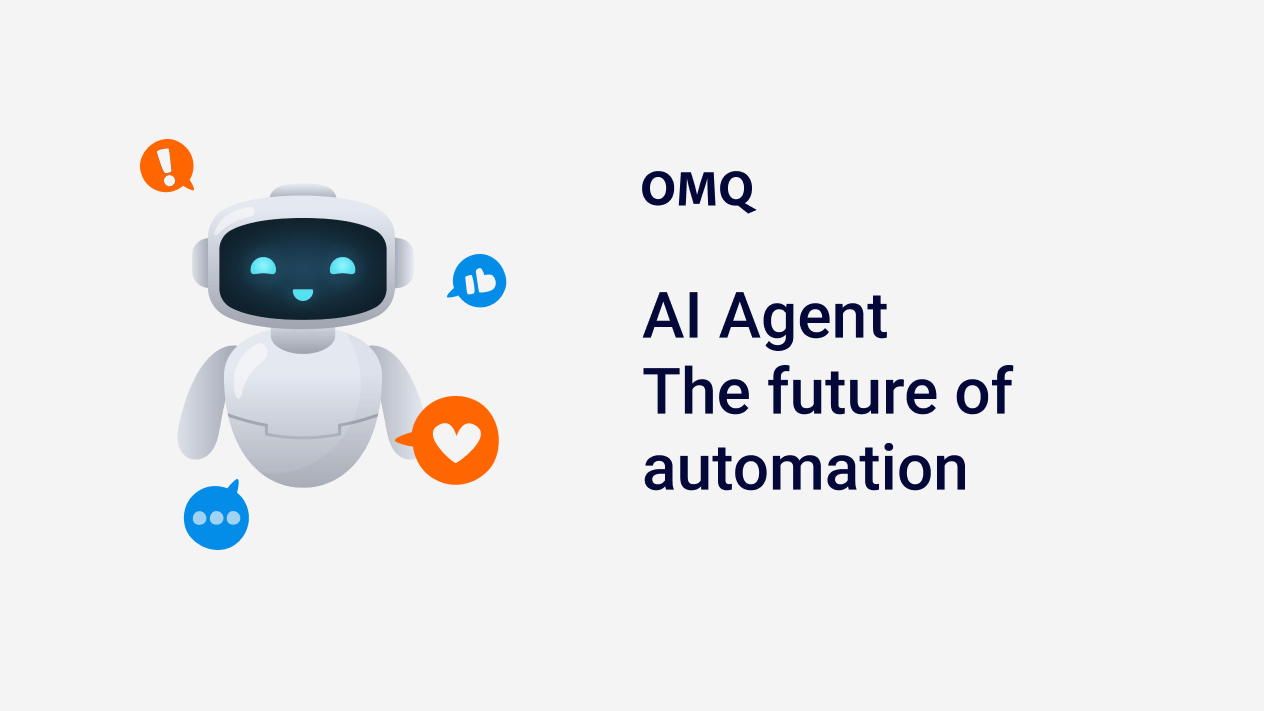Artificial Intelligence
Digital Assistants: Opportunities, Examples & Future 2025
Discover how digital assistants save time, automate processes, and shape the future of AI technology in everyday life and business.

Digital assistants (also known as AI Agents) like Alexa, Siri, or ChatGPT have long become part of our daily lives. Whether we turn on the lights via voice command, schedule appointments, or retrieve information – intelligent systems make our lives easier in many ways. Behind the friendly voices and fast responses lies advanced artificial intelligence (AI) that constantly learns and improves.
In private settings, digital assistants enhance comfort and efficiency. In business, they automate processes, improve customer service, and support data-driven decision-making. Their importance grows with every technological advancement, particularly in the context of smart homes, automated workflows, and personalized user experiences.
However, increased connectivity also raises questions: How secure is our data? How much control do we retain over our digital helpers? This article highlights the opportunities, risks, and future trends of digital assistants – and why they are becoming central to the digital transformation.
- What Are Digital Assistants?
- Functions and Tasks of Digital Assistants
- How Digital Assistants Work
- Wie verbessert Live-Chat Software den Kundenservice?
- Examples of Popular Digital Assistants
- OMQ's Digital Assistant: Automating Customer Service Processes
- Use Cases for Digital Assistants
- Challenges of Digital Assistant
- Future Outlook
- Conclusion: Digital Assistants as a Key Driver of Digital Transformation
What Are Digital Assistants?
Digital assistants are software applications that use artificial intelligence to understand voice commands and perform tasks. Their main purpose is to automate routine tasks.
Functions and Tasks of Digital Assistants
Digital assistants can handle tasks such as answering questions, sending messages, and managing appointments. Since they interact via text or voice, they can also perform more complex functions like summarizing emails, generating content, or controlling smart home devices. Functions vary by provider and often include natural language understanding (NLU), learning user preferences, and automating repetitive workflows.
Key functions include:
- Information retrieval: Answer questions, access data, and conduct conversations.
- Communication: Compose, edit, and send messages.
- Task management: Handle basic tasks such as scheduling appointments, sending messages, or making calls.
How Digital Assistants Work
Digital assistants analyze user voice or text input using AI and natural language processing (NLP). For example, when a question is asked or a command given, the system converts speech to text (speech recognition), interprets the content, understands the intent, and executes an appropriate action – such as playing music, creating an appointment, or answering a question.
In the background, digital assistants use machine learning and large datasets to continuously improve their responses. They access information from the internet, apps, or stored user data, enabling them to recognize personal preferences, make recommendations, and adapt to individual speech patterns.
Examples of Popular Digital Assistants
There are many digital assistants widely used today. Siri by Apple, integrated into iPhones, iPads, and Macs, helps send messages, make calls, and search for information online. Alexa by Amazon, often used via Echo smart speakers, can play music, control lights, set reminders, or answer questions.
Google Assistant, available on Android devices and smart home products, can understand complex queries, plan routes, and manage schedules. Cortana (Microsoft) and Bixby (Samsung) are also examples integrated into PCs and smartphones. Advanced AI assistants like ChatGPT go further, allowing free-form communication, content creation, explanation, coding, and learning support.
OMQ’s Digital Assistant: Automating Customer Service Processes
The OMQ AI Agent is an AI solution designed specifically to automate service processes in customer support. The digital assistant performs backend tasks without manual intervention. Key features include:
- GDPR-compliance – emphasizing data privacy.
- Generative AI – using modern AI techniques for automation.
- Quick integration across channels – works in chat, email, help pages, or contact forms.
- Backend actions – can automatically handle address changes, subscription updates, or cancellations.
Use Cases for Digital Assistants
The applications of digital assistants (AI agents) span private use, business, and education/research.
Private
Digital assistants have become indispensable helpers in daily life. They assist users with scheduling, controlling smart home devices, and accessing information via voice commands. Whether playing music, creating shopping lists, or checking the weather – assistants like Alexa, Siri, or Google Assistant make everyday life more comfortable and efficient.
Advanced voice recognition and personalization allow these assistants to adapt to individual preferences and continuously improve the user experience.
Business
In business, digital assistants play an increasingly important role. Companies use them to automate workflows, manage emails and schedules, and enhance customer communication. Virtual assistants help teams become more productive by handling routine tasks and providing real-time data.
AI assistants and chatbots also support customer service, answering inquiries 24/7. This reduces costs, increases efficiency, and improves the overall user experience.
Education and Research
In education and research, digital assistants open new opportunities for learning and knowledge sharing. They help students and researchers with research, writing, or learning new languages. Platforms with integrated AI assistants offer personalized learning paths, explain complex topics, and encourage independent work.
In research, digital assistants help analyze large datasets and identify relevant information faster, promoting knowledge exchange and accelerating innovation.
Challenges of Digital Assistants
Despite their advantages, digital assistants pose challenges. Users must address issues like data privacy, dependency, and error-proneness to ensure safe, efficient, and responsible use of AI assistants.
Data Privacy
Digital assistants process sensitive data such as voice commands, location, and usage patterns. Strict data protection policies and transparency are essential to build user trust and ensure compliance with regulations.
Dependency
Growing reliance on digital assistants can lead to dependency, potentially reducing problem-solving skills and independence. A mindful and reflective approach to AI use is crucial.
Error-Prone
Even advanced digital assistants can misinterpret commands or provide inaccurate responses, especially with dialects or complex queries. Continuous improvements in speech recognition and AI are necessary to enhance reliability and accuracy.
Future Outlook
Digital assistants will become even more integrated into daily life. Emerging technologies, particularly in artificial intelligence, promise to make systems more intuitive, personal, and useful. Three key trends are shaping the future of digital assistants.
Increased AI Integration
AI integration will allow digital assistants to understand complex tasks, recognize patterns, and proactively make recommendations. They will not only respond to requests but also autonomously schedule appointments, prioritize tasks, and provide personalized suggestions.
Emotional Intelligence
Future assistants may recognize moods, respond empathetically, and communicate more naturally. Emotional intelligence will be especially valuable in education, healthcare, and customer service, improving interaction and satisfaction.
Everyday Automation
Automation of routine tasks will be central. Digital assistants may handle household chores, office workflows, or mobility tasks – such as ordering groceries, controlling smart devices, or planning business trips – freeing users to focus on creative, personal, or complex activities.
Conclusion: Digital Assistants as a Key Driver of Digital Transformation
Digital assistants like Alexa, Siri, Google Assistant, or ChatGPT are pivotal to the digital transformation. They combine artificial intelligence, voice assistant functionality, and automation to streamline processes in daily life, business, and research. AI assistants and chatbots enhance productivity, user experiences, and decision-making, while saving time and simplifying routines.
The future of digital assistants will be defined by greater AI integration, emotional intelligence, and comprehensive automation, making them indispensable tools for the future of AI and digital transformation across all areas of life.


